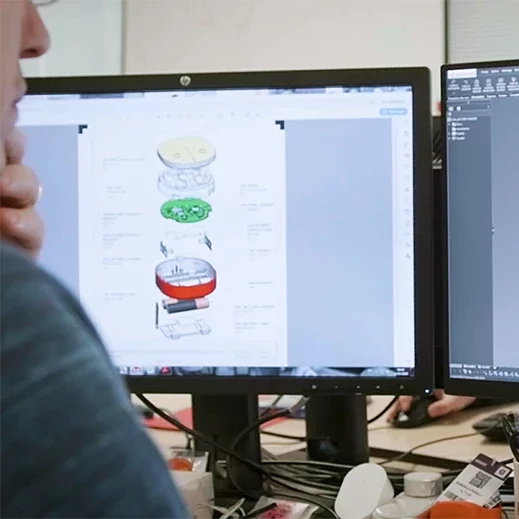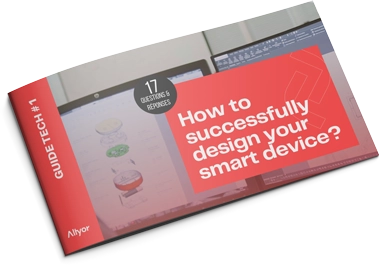Our tips for successfully designing your connected object
La conception mécanique et électronique est la première grande étape de votre parcours produit. Elle vous conduira vers la phase de prototypage, d’industrialisation et de production.
Altyor réalise cette phase grâce à ses bureaux d’études électronique et mécanique créés en 1992 et dotés de compétences multi-technologiques et multi process. Cette étape se déroule en interaction avec son centre de production, garantissant une parfaite industrialisation de la conception retenue.
What does mechanical and electronic design involve?
La conception mécanique, c’est le dimensionnement par le calcul ou les tests des différents composants, le choix des matériaux et procédés de fabrication et la réalisation de tous les fichiers de conception et d’industrialisation mécanique du produit.
La conception électronique, c’est le choix des composants électroniques avec la construction de la BOM (bill of materials), la réalisation des plans et schémas de toutes les cartes électroniques du produit (partie hardware) et la création des codes flashés dans vos produits et bancs de test (partie firmware/software).


What do you need to start designing?
Le point d’entrée peut être un POC (proof of concept), une liste de spécifications ou une analyse fonctionnelle avec des critères d’acceptation des fonctions claires et des sous-fonctions. Ces données permettront de construire le plan de qualification, qui regroupe l’ensemble des tests que le produit devra valider à la fin de la conception. Également, les spécifications aideront à réaliser une analyse fonctionnelle, une AMDEC, une matrice de conformité ou une TBSOR (test bench scope of requirements : ensemble des besoins du banc de test).
Here is an example of a specification list extract:
Sector: food
Target group: children
Geographic deployment: Europe
Shock resistance IK03
Protection against solid and liquid ingress IP23
Environmental conditions: 10°C / +60°C
Power supply: battery
Autonomy: 24h
THE LIST OF SPECIFICATIONS ENABLES US TO UNDERSTAND THE USE OF THE PRODUCT, ITS MARKET AND THE TECHNOLOGICAL CHOICES MADE BY THE CUSTOMER, WHICH ALTYOR WILL CHALLENGE.
How long does the design process take?
Development time depends on the complexity of the product and the maturity of the choices made at launch (available specifications, completed poc, blank page…).
Mechanical and electronic design is divided into 4 stages:

Depending on the technological challenges, several cycles may be necessary
What are the output documents or deliverables?
The deliverables at the end of the design phase are, for the electronic part, the Gerber files and the electronic BOM. For the mechanical part, these are CAD files, manufacturing drawings and the mechanical BOM. In addition to these elements, prototypes, the qualification plan (with test reports) and risk analyses (DFMEA, MTBF) are also included in the list of deliverables.
ALL DOCUMENTS PRODUCED OR TOOLS DESIGNED AND MANUFACTURED FOR A PROJECT ARE THE PROPERTY OF THE CUSTOMER.

How to design a successful connected object?
Mechanical and electronic design is the first major step in your product journey. It will lead you to the prototyping, industrialization and production phases. In this guide, you’ll discover 18 key points for designing your connected object.
From design to industrialization, production and remanufacturing, we offer ongoing, customized global support to ensure the success of your project.
01
Innovation support
_Building a solid foundation for your industrial project
02
Mechanical and electronic design
_Giving lasting life to your product
03
Industrialization
_Industrializing your product to make your production more reliable
04
Production
_Implementing your robust production line
05
Remanufacturing
_Supporting your product’s life cycle